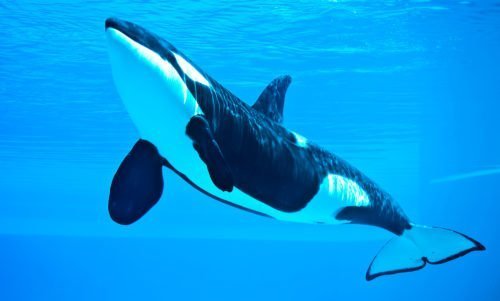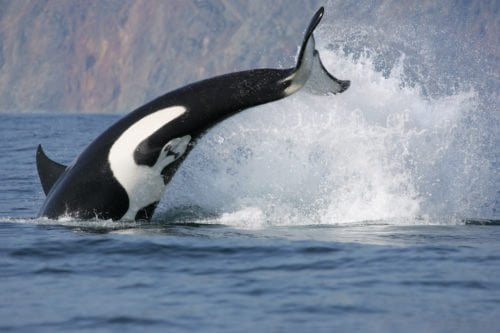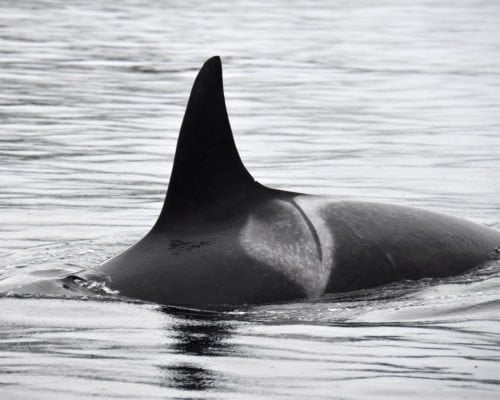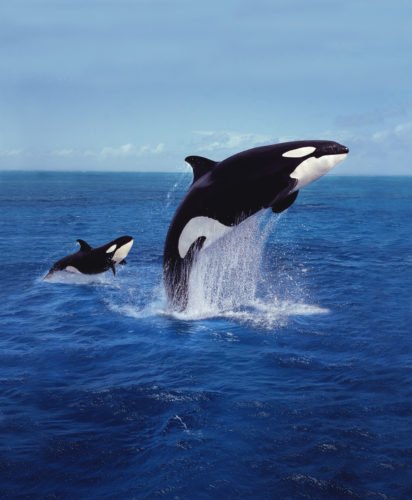Top 10 killer whale facts
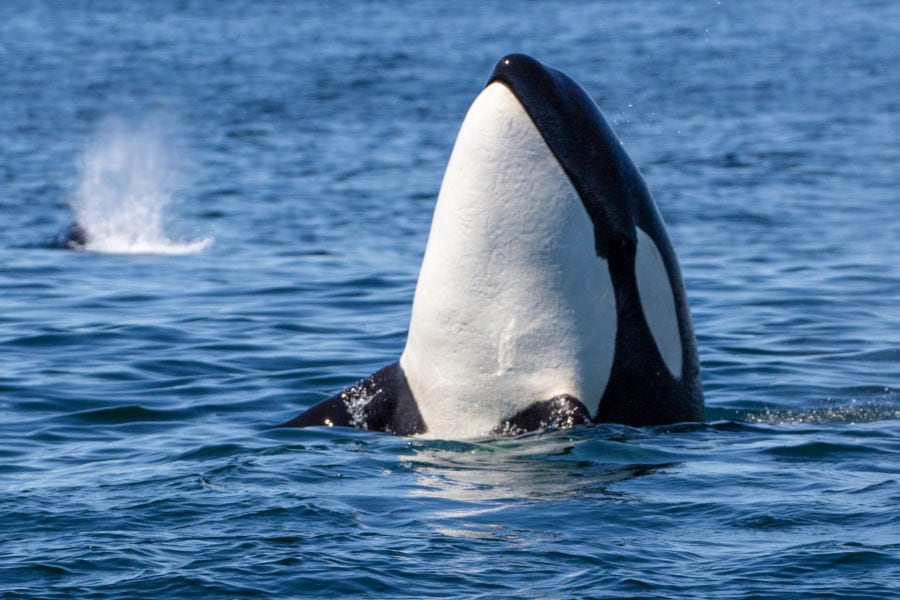
Top 10 Facts About Orcas/Killer Whales
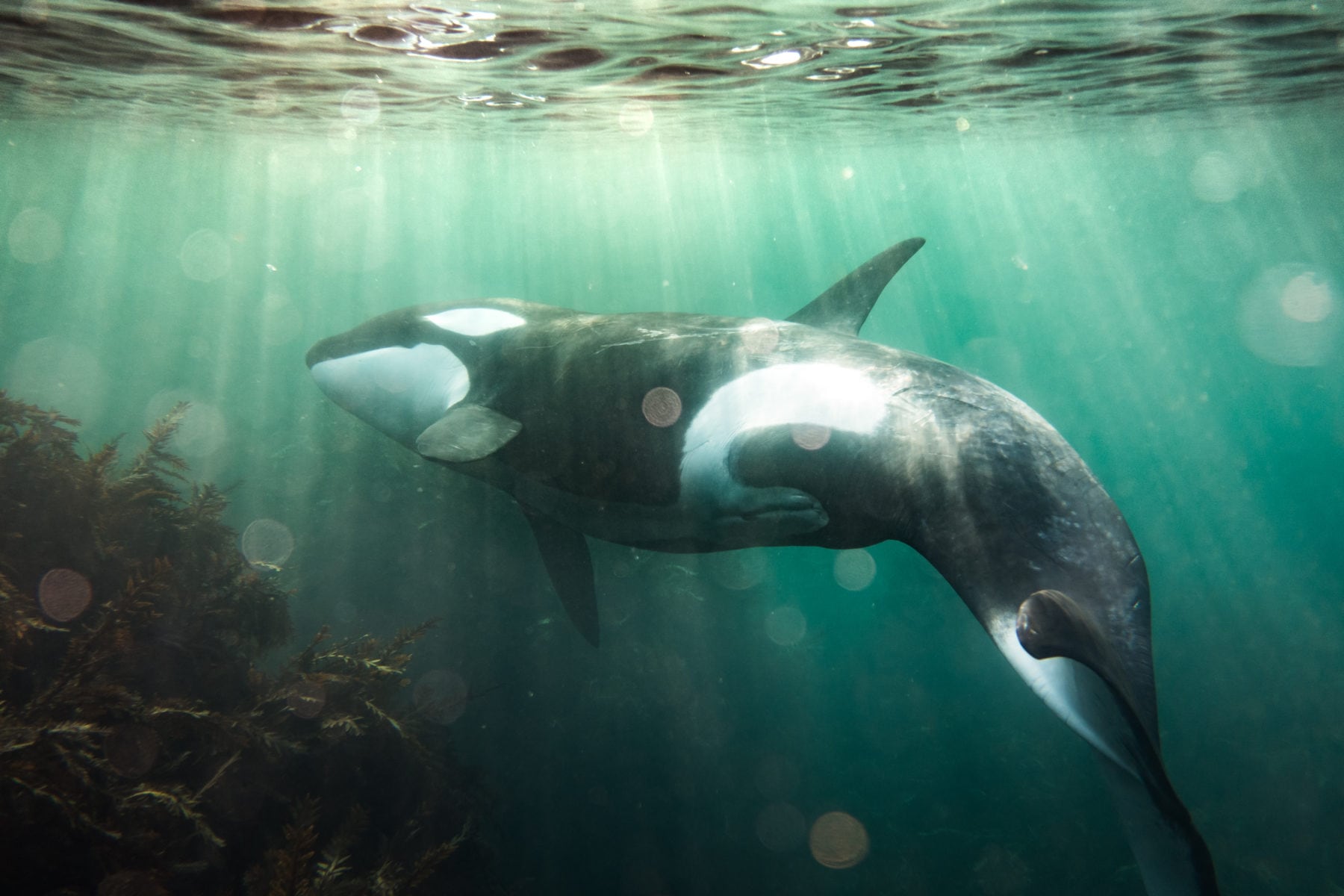
(1) Orcas aren’t whales
Orcas, or killer whales as they are also known, are not whales. They are actually from the dolphin family. Orcas are apex predators. Sadly, the only thing that hunts them are humans.
(2) Orcas can live anywhere
These incredible and clever mammals have survived by adapting. Orcas can be found in every ocean on Earth (they prefer cold water) because they go wherever they can find food.
(3) Orcas eat a wide variety of food and a lot of it!
Orcas eat just about everything – whales, seabirds, sharks, turtles, fish, squid and even dolphins. Some orcas have been known to eat as much as 200kg of food a day. Females can weigh as much as 5000kg while males can top 9000kg!
(4) They’re family-oriented creatures
Orcas are also very social animals and most will spend their whole life in a family group led by an older female. Sons will also stay with their mums. A recent study found that males were eight times more likely to die in the year following their mother’s death.
(5) Orcas live long lives
The average lifespan of an orca is 50 years. In the wild, left to their devices, orcas can live to the healthy old age of 80. Holding an orca in captivity may shorten its life by 25 years or more.
(6) Every orca is physically unique
Orcas might look all the same to you but they have unique markings and dorsal fin shapes. The dorsal fin of an orca (the fin on its back) is made individual through shape, size, distinctive nicks and scars. Their saddle patch, a white mark located near the dorsal fin, is also custom-made for each orca through shape, size, colour and scarring.
(7) Orcas communicate with each other through clicking sounds
Echolation is the term given to the high-frequency sound waves orcas produce. Through clicks, pulses and whistles, orcas can coordinate their families or “pods”. Every orca pod has a distinct echolation dialect, varying in duration, pitch and pulse pattern. As echolation bounces off animals and objects and reflects back to the whale emitting the sound, it also helps orcas to sense the movement of prey.
(8) Orcas may befriend dolphins and even imitate them
Fish-eating orcas have been found swimming alongside dolphins. This guarantees safety for a dolphin, as different species of orcas avoid each other. Orcas that have been kept in captivity with bottle-nosed dolphins have also shown tendencies to adopt the whistling and clicking noises of dolphins. This phenomenon is known as vocal plasticity.
(9) Orcas keep one eye open while sleeping
Orcas don’t have an automatic breathing reflex. This means they need to remain semi-conscious while sleeping, otherwise they would suffocate and drown. The orca allows one side of its brain to sleep, while the other side stays on night watch, remaining alert to danger and enabling the orca to continue breathing.
(10) Orcas give birth and nurse at sea
Female orcas give birth to their young in the water, one at a time. Orcas will become pregnant once every 9–10 years. A newborn calf also nurses below water. The mother has its nipples concealed in abdominal mammary slits, which the calf suckles on.
